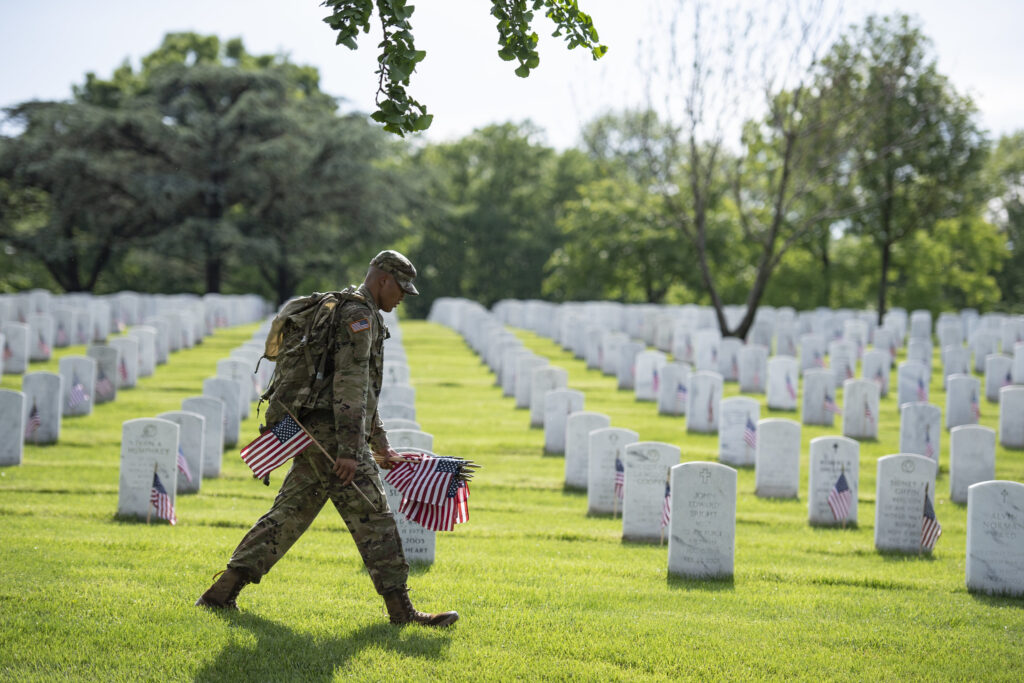In May 1868, a former Civil War General and head of a Union veteran’s group, John A. Logan, led a commemoration at Arlington National Cemetery, and he issued a decree calling for each May 30 across the country to be set aside to remember those killed in the line of duty. The day was originally to be a nationwide day of commemoration for the more than 620,000 soldiers killed in the recently ended Civil War.
On Decoration Day, as Logan dubbed it, Americans should lay flowers and decorate the graves of the war dead “whose bodies now lie in almost every city, village and hamlet churchyard in the land.” According to legend, Logan chose May 30 because it was a rare day that didn’t fall on the anniversary of a Civil War battle. Others believe the date was selected to ensure that flowers across the country would be in full bloom.
After World War I, when the US lost more than 100,000 men, Decoration Day was expanded to honor all those who had died in the service of the country, not just the Civil War. The name gradually changed as people started to use the term Memorial Day rather than Decoration Day in the early 1900’s. Decoration Day was always observed on May 30 regardless of the day of the week.
In 1968, Congress enacted the Uniform Holidays Act which moved the observances of several holidays to Mondays to create long weekends. Then in 1971, Congress made Memorial Day an official federal holiday, pinning it to the last Monday in May.
The Historical Society happened upon this article about an 11-car hospital troop train arriving at Valley Forge Army Hospital on Memorial Day 1943. On board were dozens of wounded soldiers returning from battle in North Africa, glad, no doubt, to be back on American soil.
We thank these and all surviving veterans, and this weekend we honor their brethren who perished in the service of our country, who fought and died for our freedom and for the freedom of nations around the world. We salute you all.

Soldiers from the 3d U.S. Infantry Regiment (The Old Guard) place U.S. flags at headstones as part of Flags-In at Arlington National Cemetery, Arlington, Virginia, May 23, 2019. For more than 55 years, soldiers from the Old Guard have honored our nations fallen heroes by placing U.S. flags at gravesites for service members buried at both Arlington National Cemetery and the U.S. Soldiers and Airmens Home National Cemetery just prior to the Memorial Day weekend. Within four hours, over 1,000 soldiers place 245,000 flags in front of every headstone and Columbarium and niche wall column. (U.S. Army photo by Elizabeth Fraser / Arlington National Cemetery)
